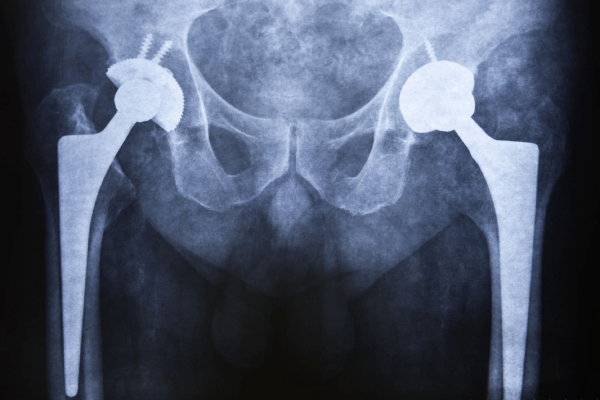Robotic Arm Assisted Joint Replacement Surgery in Turkey

Robotic Da Vinci Replacement Surgeries in Turkey
The concept of a robot performing surgery may sound like something out of a science fiction movie, but robots are becoming more popular in operating rooms. Robots can help enhance precision in certain types of joint replacement surgeries, which can lead to better patient outcomes.
If you’re having surgery, you may be asking if robotic-assisted surgery in Turkey is only for specific types of patients. Robotic joint replacement is for you if you’re an excellent candidate for joint replacement surgery in general.
What Is Superior about Robotics Surgery?
The advantages of robotic-arm-assisted joint replacement surgery include better results, faster recuperation, and less pain.
To get the greatest results for total knee and total hip joint replacements, robotic technology blends computer-generated accuracy with the ability, expertise, and talent of our doctors. Patients can expect the following benefits from a robotics-arm assisted joint replacement:
• Less time to recuperate
• Medical stays are shorter.
• Inpatient physical treatment is used less frequently.
• Less pain after surgery, which means less pain drugs are required.
• Improved mobility, flexion, and long-term functionality
These advantages stem from the robotics accuracy’s least intrusive surgical attribute. Scarring and blood loss are reduced with smaller incisions. There is less soft tissue injury near the surgical site, and the implants are placed and positioned precisely and individually.
During a typical joint replacement treatment, what happens?
Due to rheumatoid, post-traumatic, or osteoarthritis, avascular necrosis, or moderate joint abnormalities, joint replacement surgery can relieve pain and restore movement. The technique relieves painful bone-on-bone friction and allows patients to resume normal activities.
An orthopedic physician removes the damaged joint and replaces it with a medical-grade plastic and metal implant during typical joint replacement surgery in Turkey. A trained orthopedic surgeon manually fits the implants to the prepared bone using X-rays, physical measures, and a steady hand, aligning the joint using measurements from the patient’s body, X-rays, and visual inspection.
The traditional approach is used in the majority of joint replacement surgeries in Turkey.
Surgery with a robotic arm is more precise.
Robotic-arm assisted surgery improves the joint replacement operation in the hands of a trained, qualified orthopedic surgeon, resulting in more refined, exact results.
A computed tomography (CT) scan is ordered before a robotic-joint replacement treatment to create a virtual, three-dimensional model of the patient’s knee or hip joint. The surgeon can rotate the joint and observe it from all sides using 3-D technology to determine the right implant size and build a customised surgical plan.
The improved visualizations allow orthopedic doctors to digitally align the slopes, planes, and angles of the patient’s bones for tailored implant placement based on the individual’s joint anatomy.

Who Performs Robotic Assisted Joint Replacement Surgery in Turkey?
The surgeon employs robotics to assist with the procedure. The robotic system does not operate on its own, make decisions, or move.
In the operating room, the licensed orthopedic surgeon remains the hands-on expert and decision maker. During the procedure, the robotic arm guides the incision position but remains under the surgeon’s supervision.
In the hands of a good surgeon, robotic-arm assisted technology is a tremendous instrument.
For superior results, the SmartRobotics System integrates three distinct components: haptic technology, 3-D visualization, and sophisticated data analytics.
The surgeon directs the robotic arm to solely target the injured joint. Mako’s AccuStopTM haptic technology provides surgeons with real-time visual, aural, and tactile vibration feedback, allowing them to “feel” the surgery and avoid ligament and soft-tissue damage that is common during surgical procedures. The surgeon can use haptic technology to direct the robotic arm to only the injured area of the joint.
Furthermore, the technology allows the surgeon to overlay the surgical plan on the joint during the procedure, allowing for adjustments to ensure that the implant is appropriately balanced within the preplanned bounds.
Is Robotics Joint Replacement Surgery a good fit for you?
Ask your surgeon if you are a candidate for robotic-assisted joint replacement surgery if you have joint discomfort that impairs your ability to move or perform daily activities. If you have degenerative osteoarthritis, rheumatoid or post-traumatic arthritis, avascular necrosis, or moderate joint abnormalities, you may be a candidate for a Robotic System joint replacement in Turkey.
• You have discomfort and stiffness that makes it difficult to do simple things like stand up from a seated position.
• You’ve tried nonsurgical, nonconservative therapies but they’re no longer working to relieve your pain or suffering.
• You are in good physical condition.
• You don’t have a pre-existing medical condition that necessitates a stay in a typical hospital.
When medicine and other non-surgical therapies have failed, it may be time to consider surgery.
Is Robotics Surgery Really Better?
Robotic joint surgery appears to have advantages over non-robotic operations, according to a growing body of evidence. However, data regarding all types of joint replacements is still being collected.
For a long time, surgeons have used robots in partial knee replacements. There is evidence to suggest that robotic partial knee replacements have fewer failures than traditional partial knee replacements.
Only lately has the technology been developed for use in total knee and hip replacements.
Contact us to get more information about da vinci replacement surgery costs in Turkey.



